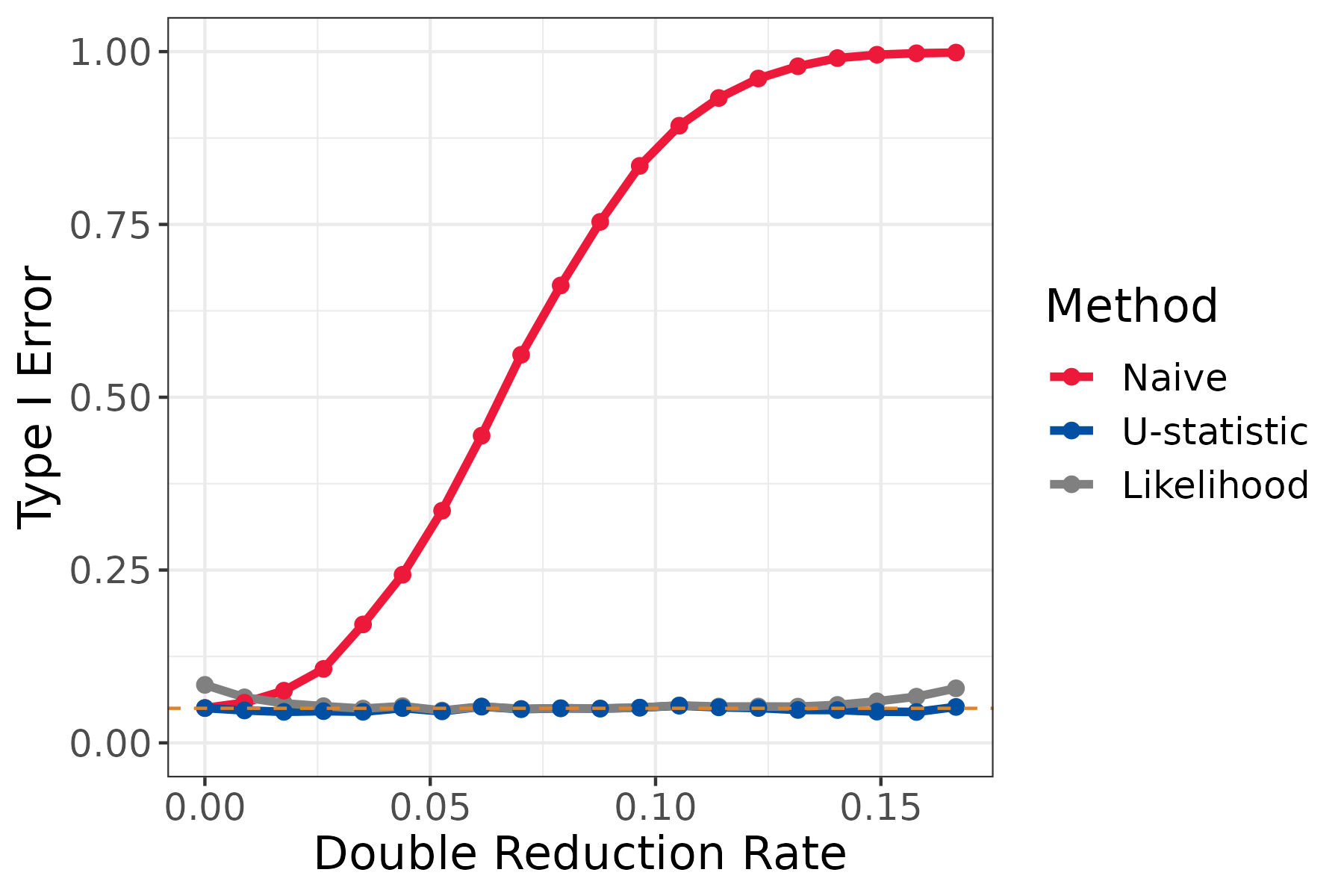Testing for Hardy-Weinberg equilibrium is a fundamental step in many genetic analysis procedures. The literature on testing for equilibrium in diploids is vast, but it’s much more limited when it comes to polyploids. It turns out that this is a significant omission from the literature, since equilibrium tests are hampered by the presence of double reduction.
Double reduction, the co-migration of sister chromatids into the same gamete during meiosis, is a phenomenon in autopolyploids which can affect equilibrium genotype frequencies, increasing the Type I error rate for standard methods that test for equilibrium.
For example, here is a plot of Type I error (y-axis) against different levels of realistic double reduction (x-axis) in a simulated autotetraploid sample of 1000 individuals. The red line is a typical method folks use to test for equilibrium in autopolyploids. The nominal level is 0.05 (horizontal dashed line), however the naive method only controls for Type I error at this nominal level when there is low/no double reduction.

I tackle equilibrium testing in my manuscript (Gerard, 2023) using two main approaches: (i) a likelihood ratio test, and (ii) a novel U-statistic minimization approach which generalizes the classical χ2 test from diploids to autopolyploids. You can see in the figure above that these tests both are able to control for Type I error across the range of double reduction rates.
There are other contributions in this manuscript:
(i) I highlight the difficulty in distinguishing between random mating and equilibrium in autotetraploids, as this has been a point of some confusion in the literature.
(ii) I provide estimates of double reduction rates given equilibrium. No other principled methods currently exist to estimate double reduction rates in natural autopolyploid populations. Though, I highlight the uncertainty of such estimates using just biallelic loci.
(iii) I create a bootstrap approach to account for genotype uncertainty.
Check out my publication in Biometrics:
Gerard D. (2023). Double reduction estimation and equilibrium tests in natural autopolyploid populations. Biometrics 79(3), p. 2143–2156. doi:10.1111/biom.13722 | bioRxiv:2021.09.24.461731.